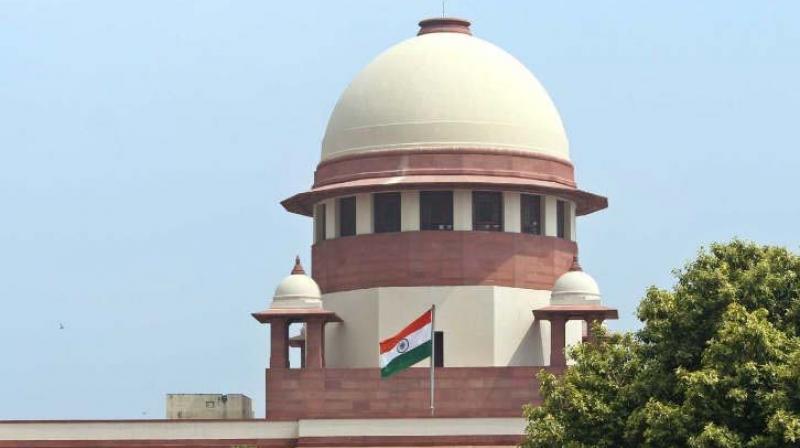A crime never dies: Limitation not written in stone
Vigilantibus et non dormientibus jura subveniunt' is a legal maxim which means that the vigilant and not the lethargic are assisted by the law.

The ghosts of the past sometimes return to haunt people, especially public figures. Veteran actor Jeetendra faced a molestation case after 47 years of the alleged offence, which was stayed by the Himachal Pradesh High Court. When a case is registered years or even decades later, eyebrows are raised.
'Vigilantibus et non dormientibus jura subveniunt' is a legal maxim which means that the vigilant and not the lethargic are assisted by the law. This is why even a First Information Report (FIR) has a column to record reasons for delay in reporting a crime. The longer the delay, the less credibility is attached to a complaint as the memory of the victim and witnesses may tend to fade over time, weakening their testimonies. That's the rationale behind the maximum time frame prescribed for registration of a criminal case, which in legal parlance, is limitation. But limitation is not written in stone.
The Supreme Court in Sajjan Kumar Vs Central Bureau of Investigation ruled that “delay in launching criminal prosecution may be a circumstance to be taken into consideration in arriving at a final decision, but it cannot itself be a ground for dismissing the complaint.”
The Code of Criminal Procedure (CrPc) lays down the limitation for offences from Sections 467 to 473. Under Section 468(2) CrPc, the period of limitation is six months if the offence is punishable with fine only, one year if the imprisonment does not exceed one year and three years for a term more than one year but not exceeding three years. Limitation, under Section 469(1) CrPc, kicks in from the date of the offence, or the date of knowledge of the occurence, or the date on which the identity of the offender is known to the aggrieved person or the investigating officer.
The code is silent on limitation for offences that carry imprisonment for more than three years and clothes the court under Section 473, with the power to take cognisance of any offence beyond the period of limitation, based on “facts and circumstances of the case”, if the delay can be “properly explained” or “in the interests of justice.” The Supreme Court in Smt. Vanka Radhamanohari Vs Vanka Vankata Reddy, had put this provision in perspective. “A court can take cognisance of an offence not only when it is satisfied on the facts and in the circumstances of the case that the delay has been properly explained but even in the absence of proper explanation if the court is satisfied that it is necessary to do so in the interests of justice.” Section 473 contains a ‘Non Obstante’ clause as it has an overriding effect on Section 468 CrPc. There is a clear distinction between Section 473 CrPc and Section 5 of the Limitation Act. Under the Limitation Act, the onus is on the applicant to show sufficient cause for condonation of delay.
But the CrPc casts a duty on the court to come to a decision based on the nature of the offence and the background of the victim. The apex court held that the doctrine of vigilance may be inapplicable in offences like cruelty to women.
The code has more in the form of Section 472 which recognises a ‘continuing offence’ with a fresh period of limitation beginning to run with every add on. On the ground, delays in prosecution are viewed as a blot on the ‘procedure established by law’. The Supreme Court in Kartar Singh Vs State of Punjab had held that “the concept of 'speedy trial is read into Article 21 as an essential part of the fundamental right to life and liberty guaranteed and preserved under our Constitution.”
The rights of the victim and the accused need to be balanced. The disappearance of material evidence and filing of vexatious and belated prosecutions long after the date of the offence dilute a fair trial. The legislative intent of the provisions of limitation can be gleaned from the Law Commission's 42nd Report which dealt with time limits for filing criminal cases.
It observed that “the deterrent effect of punishment which is one of the most important objectives of penal law is impaired if the punishment is not inflicted promptly and if it is inflicted at a time when it has been wiped off the memory of the offender and of other persons who had knowledge of the crime. For the purpose of peace and repose, it is necessary that a person who has committed a minor crime should not be kept in continuous apprehension that he may be prosecuted at any time. Negligence or undue delay on the part of a private prosecutor should be severely discouraged.”
In a landmark ruling, the Supreme Court in Sarah Mathew Vs Instititute of Cardio Vascular Disease made it clear that while computing limitation under Section 468 of the CrPc, the date of filing of the complaint or the date of institution of prosecution must be considered and not the date on which a Magistrate takes cognisance.
The Court observed that “penal statutes must be strictly construed. There are, however, cases where this court has having regard to the nature of crimes involved, refused to adopt any narrow and pedantic, literal and lexical construction. It is well settled that procedural laws must be liberally construed to serve as the handmaid of justice and not as its mistress.”

